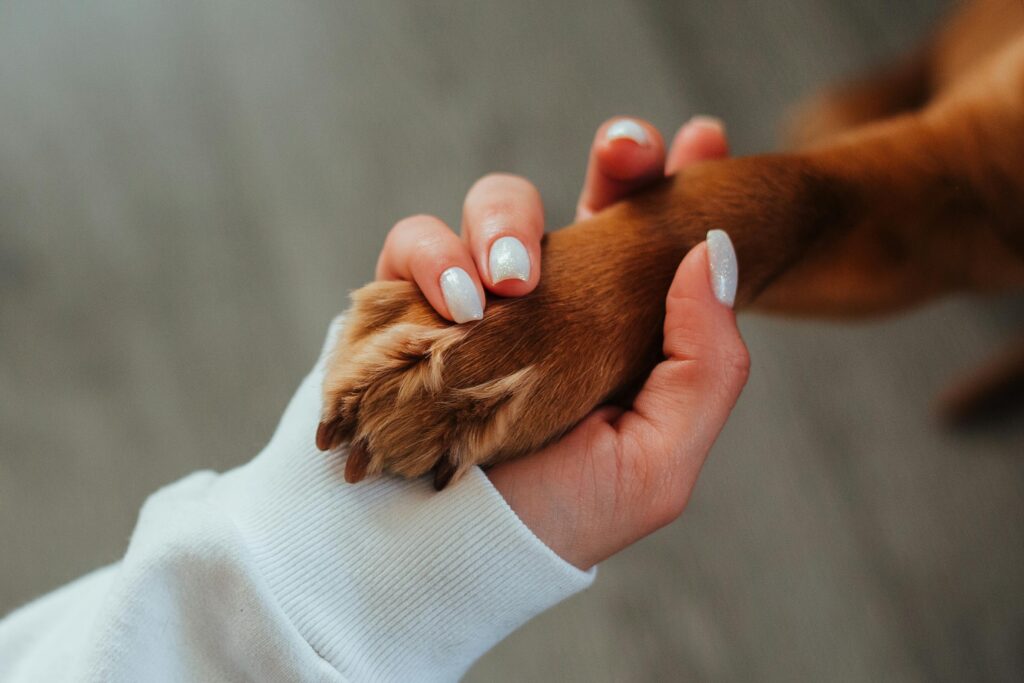
As our beloved dogs age, they may slow down a bit, but that doesn’t mean they’re done learning. In fact, keeping your senior dog engaged with training can provide numerous benefits, from mental stimulation to physical exercise. In this blog, we’ll explore effective training tips for older dogs that will help keep them sharp, active, and happy well into their golden years.
Understanding Your Senior Dog’s Needs

Before diving into training, it’s essential to consider the unique needs of older dogs:
1. Respect Their Physical Limitations:
- Joint and Mobility Issues: Senior dogs may have arthritis or other conditions that affect their mobility. Tailor training activities to be gentle on their joints, avoiding exercises that require jumping or quick movements.
- Adapted Exercises: Focus on low-impact exercises that are easy on the body, such as walking, stretching, or basic commands like “sit” and “stay.”
2. Keep Their Mind Engaged:
- Cognitive Health: Mental stimulation is just as important as physical exercise for senior dogs. Regular training helps keep their minds sharp and can even slow cognitive decline.
- Pacing: Older dogs might not learn as quickly as they did in their younger years, so patience and consistency are key. Break tasks into smaller steps and reinforce success with rewards.
Effective Training Tips for Senior Dogs

1. Reinforce Basic Commands:
- Start with the Basics: Even if your dog knows basic commands like “sit,” “stay,” and “come,” it’s beneficial to reinforce these skills. This not only boosts their confidence but also lays a strong foundation for learning new tricks.
- Use Positive Reinforcement: Reward your dog with treats, praise, or affection when they perform a command correctly. Positive reinforcement is particularly effective for older dogs, who may respond better to gentle encouragement.
2. Introduce New Tricks Gradually:
- Simple and Safe Tricks: Focus on teaching tricks that are easy and don’t strain your dog physically. For example, “shake,” “spin,” or “touch” (where your dog touches their nose to your hand) are great options.
- Break Down Steps: Introduce new tricks in small, manageable steps. Reward your dog for each step they master, and gradually increase the complexity as they become more comfortable.
3. Keep Training Sessions Short and Frequent:
- Avoid Overwhelming Your Dog: Senior dogs may have shorter attention spans and can tire more easily. Keep training sessions brief—around 5 to 10 minutes—and spread them out throughout the day.
- End on a Positive Note: Always finish training with a successful command or trick, leaving your dog feeling accomplished and eager for the next session.
4. Mental Stimulation Through Puzzle Toys:
- Interactive Toys: Incorporate puzzle toys or treat-dispensing toys into your dog’s routine. These toys challenge your dog to solve problems, keeping their brain active and engaged.
- Scent Work: Another great way to stimulate your senior dog’s mind is through scent work. Hide treats or toys and encourage your dog to find them using their sense of smell.
5. Be Patient and Adaptable:
- Adjust to Their Needs: Understand that your senior dog may not be able to keep up with the same training pace as a younger dog. Adapt your approach based on their energy levels and capabilities.
- Celebrate Small Wins: Every bit of progress is worth celebrating, no matter how small. Be patient and keep the experience positive for both you and your dog.
The Benefits of Training Senior Dogs

1. Enhances Cognitive Function:
- Mental Engagement: Training exercises keep your dog’s brain engaged, helping to maintain cognitive function and potentially delay age-related decline.
- Problem-Solving: Teaching new tricks and commands challenges your dog to think and problem-solve, which is crucial for their mental health.
2. Provides Gentle Physical Exercise:
- Maintains Mobility: Even light training exercises help keep your dog’s muscles toned and joints flexible, reducing the risk of stiffness and arthritis progression.
- Weight Management: Regular activity through training helps manage your dog’s weight, lowering the risk of obesity-related health issues.
3. Strengthens Your Bond:
- Quality Time: Training sessions offer a great opportunity to spend quality time with your dog, deepening your bond and improving their responsiveness to commands.
- Positive Interactions: Through training, you create positive interactions that enhance your dog’s overall well-being and happiness.
Common Training Challenges with Older Dogs

1. Health-Related Limitations:
- Joint Pain: If your dog has arthritis or joint pain, avoid commands that require sitting or lying down repeatedly, as this can be uncomfortable for them. Instead, focus on standing commands or light walking.
- Hearing or Vision Loss: If your dog has lost some hearing or vision, adjust your training methods to accommodate these changes. Use hand signals or touch cues for dogs with hearing loss, and be mindful of their environment for dogs with vision issues.
2. Slower Learning Pace:
- Patience is Key: Senior dogs may take longer to learn new commands, so patience and consistency are essential. Break down training into smaller steps, and provide plenty of positive reinforcement.
Keep Your Senior Dog Sharp and Active

Training your older dog is not only possible but also incredibly beneficial. With patience, understanding, and the right approach, you can keep your senior dog sharp, active, and happy. Whether you’re reinforcing old commands or teaching new tricks, the time you spend together will enhance your dog’s quality of life and strengthen the bond you share. Remember, every dog is different, so tailor your training to meet your senior dog’s unique needs and enjoy the journey together.
